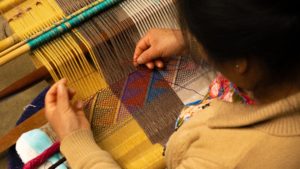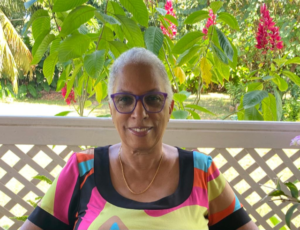Adolescent Health Profile - Sheila Campbell-Forrester

Photo by bradford zak on Unsplash
“When I reflect on my life, it has been a rich tapestry of experiences, failures, and achievements, and at age 70, I can truly say, I am grateful for it has all been good!”
– Sheila Campbell-Forrester
Conversations with Sheila Campbell-Forrester: A Tapestry of Experiences, Failures, and Achievements in Adolescent Health
At nine, Sheila Campbell-Forrester entered a spelling bee competition. Ironically, the word that prevented her from winning was “Adolescence”. Even though being extremely disappointed at age nine, as she later reflects on life with a smile, she notes, “surely this was a signal of things to come even though I didn’t realize it then.”
Campbell-Forrester’s adolescent years were wonderful. Attending an all-girls boarding school provided her with opportunities to explore a variety of topics, many of which would influence her life choices and lead her to a career in medicine and public health. Another pivotal turning point for Campbell-Forrester was while she was studying medicine at the University of the West Indies and was selected as one of four participants chosen to represent her country (Jamaica) at the UN’s 25th Anniversary World Youth Assembly. In awe of the power youth brought to this assembly (and a Youth Conference on the Environment at McMaster University in Canada, which Campbell-Forrester’s was also invited to) and their ability to catalyze change, further solidified her desire to work in public health.
In 1977, as Jamaica was in the early stages of developing a Primary Health Care Blueprint, Campbell-Forrester was fast tracked to do the Public Health Diploma Programme at the University of the West Indies (which subsequently became the MPH programme). In 1979, she started working at the Kingston and St. Andrew Health Department where her love affair with adolescent health began. Assigned to work with school nurses and nurse practitioners, who provided services ranging from eye and dental care, to preventative care, to counseling services, a fire was ignited in her. “I realized that I connected easily with young people and was often the bridge between them and their families,” said Campbell-Forrester.
With the “threads” of medicine, public heath, and love of adolescents starting to intersect, Campbell-Forrester’s adolescent tapestry began to take shape. In 1983, Campbell-Forrester and colleagues participated in a WHO course in Family Planning Research. The expectation was to design an adolescent fertility project for participants’ home country. After proposing their project, Campbell-Forrester and team were informed that their project did not meet WHO criteria for family planning. Now fairly well established in her adolescent health career, and despite recommendations from the course facilitator, Campbell-Forrester reiterated that the prime objective was to meet the sexual and reproductive health needs of the adolescent in their country and was adamant that the project they created would best serve the adolescents in their region. As chance would have it, Dr. Herbert Friedman, at the time an adolescent health consultant, was due to arrive at WHO and Campbell-Forrester and colleagues were able to meet and consult with him on their project. This meeting forged a mentorship and friendship and heralded the beginning of an adolescent health programme in Western Jamaica, funded by WHO!
With information gleaned from Friedman and other adolescent health pioneers (Jane Ferguson, David Bennett, and Bob Blum) from around the world, Campbell-Forrester and team trained health care providers to deliver services to adolescents in primary care facilities, operate a special after school adolescent clinic, and trained adolescents on how to become active participants in the delivery of services. An adolescent club, organized and managed by teens, was developed with members becoming involved in community service, ensuring that children in the community were fully immunized. In addition, several summer camps offered opportunities for young people to learn the importance of leadership roles and taught them life skills. In the 90’s the Ministry of Health expanded the programme, replicating some of the activities, however, it took years of advocacy for adolescent health to be integrated into the Ministry of Health’s programme of work.
Deeply inspired by the mentorship she had received, Campbell-Forrester joined the US-based Society for Adolescent Health and Medicine (SAHM) and the International Association of Adolescent Health (IAAH), where she served as the inaugural regional Vice President for the Caribbean. As a member of this organization, she was able to connect with other adolescent health professionals from around the world, continue to advocate on behalf of adolescents, especially in her region, and help to empower adolescent voices.
As her adolescent tapestry continued to be woven, Campbell-Forrester joined the Hubert Humphrey Fellowship program at the Rollins School of Public Health at Emory University, adding yet another thread to her tapestry. This thread allowed her to further expand her knowledge about public policy, global health, health economics, health promotion, and public health leadership. It was during this time that she was also able to analyze the preliminary data from the first Jamaica School Based Health Survey.
Serving as the Chief Medical Officer for Jamaica from 2007-2011, she was able to see the growth and development of adolescent health. Currently, there are 44 health centers throughout the Jamaica providing adolescent “friendly” health services based on specific criteria and standards for quality care, developed by the Ministry of Health. There is now a Department of Child and Adolescent Health at the University of the West Indies and a Post Graduate Diploma programme in Adolescent Health and Advocacy pioneered by Dr. Abigail Harrison. Campbell-Forrester is excited about the strides adolescent health has seen over the years, however she notes that there is more work to be done!

Sheila Campbell-Forrester
Post retirement (which doesn’t sound like she’s retired at all!), Campbell-Forrester serves as an adjunct lecturer of Adolescent Health at the University of the West Indies, as a consultant and advisor to PAHO/WHO on Adolescent Health, is assisting Caribbean countries with developing adolescent health plans, is an advisor to Duncan Tree Foundations’ scoliosis care programme, and is presently updating the strategic plan for the health of pre-adolescents and adolescents in Jamaica. In addition to these “retirement” activities, she has also been instrumental in establishing the Caribbean Adolescent Association for Health (CAAH). Along with Drs. Abigail Harrison and Asha Pemberton, CAAH hosted their first congress in 2020 which produced the Caribbean Adolescent Road Map, a framework for adolescent health in Caribbean countries.
As you can see, Campbell-Forrester’s tapestry is rich with knowledge, experience, and passion, but far from complete! Her mission now is to mentor, teach, and help adolescents and health care providers gain the knowledge and skills they need to serve, advocate for, and empower adolescents.
“Resilience is one of the hallmarks of the adolescent period and I believe we can and will overcome this period and be stronger for having experienced it. A brighter future awaits the adolescent, and the world will benefit. I am hopeful and will continue to do my part until…”
– Sheila Campbell-Forrester
